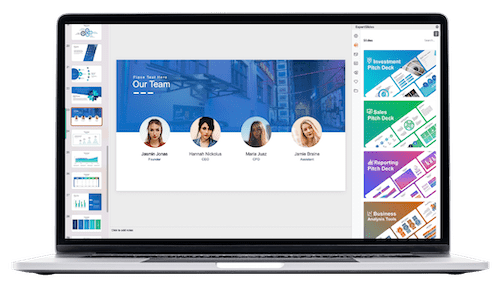Interactive Questions for Presentation – 5 Must-Try Examples
Table of Contents
Interactive questions are a powerful tool for engaging your audience during presentations. By incorporating interactive elements into your presentation, you can capture the attention of your audience and keep them actively involved in the discussion. Interactive questions come in various forms, including polling questions, quiz questions, open-ended questions, and interactive Q&A sessions.
In this article, we will explore five must-try examples of interactive questions for presentations and discuss how they can enhance audience engagement and participation.
Key Takeaways
- Interactive questions for presentations can engage and involve your audience in real-time.
- Polling questions can be used to gauge audience opinions and encourage participation.
- Quiz questions can test knowledge and encourage audience engagement.
- Open-ended questions can foster discussion and collaboration among audience members.
- Interactive Q&A sessions can encourage audience engagement and participation.
Polling Questions: Engaging Your Audience in Real-Time

Polling questions are a great way to engage your audience in real-time during a presentation. By asking the audience to respond to a poll, you can gather valuable insights and feedback on the topic at hand. Polling questions can be used to gauge the audience’s opinions, preferences, or knowledge on a particular subject.
For example, you can ask the audience to vote on their favorite feature of a product or to share their thoughts on a current industry trend. By incorporating polling questions into your presentation, you can make your audience feel like active participants in the discussion, rather than passive listeners. Polling questions can be easily integrated into your presentation using various polling tools such as Mentimeter, Poll Everywhere, or Slido.
These tools allow you to create and display polls in real-time, making it easy for the audience to participate and see the results instantly. When using polling questions, it’s important to keep the questions clear and concise to encourage maximum participation. Additionally, consider using visual aids such as charts or graphs to display the poll results, which can further engage the audience and spark discussion.
Quiz Questions: Testing Knowledge and Encouraging Participation
Quiz questions are another effective way to incorporate interactivity into your presentation. By testing the audience’s knowledge on the topic at hand, you can encourage participation and keep the audience engaged. Quiz questions can be used to reinforce key points or concepts, as well as to challenge the audience’s understanding of the material.
For example, you can ask the audience to answer multiple-choice questions related to the content of your presentation, or to solve a problem or puzzle that requires critical thinking. When creating quiz questions for your presentation, it’s important to strike a balance between challenging the audience and making the questions accessible. Consider incorporating a mix of easy, medium, and difficult questions to cater to different levels of knowledge within the audience.
Additionally, provide feedback on the correct answers to help reinforce learning and encourage participation. Quiz questions can be delivered using various presentation tools such as PowerPoint or Google Slides, or through dedicated quiz platforms like Kahoot or Quizizz. By incorporating quiz questions into your presentation, you can create a fun and interactive learning experience for your audience.
Open-Ended Questions: Fostering Discussion and Collaboration
| Interactive Question Type | Description |
|---|---|
| Multiple Choice | Allows audience to select from a list of options |
| True/False | Engages audience by prompting them to determine the correctness of a statement |
| Open-Ended | Encourages audience to provide their own answers or opinions |
| Ranking | Asks audience to prioritize items based on their preferences |
| Word Cloud | Generates a visual representation of audience responses to a question |
Open-ended questions are a powerful tool for fostering discussion and collaboration during presentations. By asking open-ended questions, you can encourage the audience to share their thoughts, experiences, and ideas on the topic at hand. Open-ended questions can be used to spark meaningful conversations, generate new insights, and promote collaboration among the audience members.
For example, you can ask the audience to share their personal experiences related to the topic, or to brainstorm potential solutions to a problem. When using open-ended questions in your presentation, it’s important to create a safe and inclusive environment where all audience members feel comfortable sharing their thoughts. Encourage active listening and respectful dialogue among the audience members to ensure that everyone has an opportunity to contribute.
Additionally, consider using interactive tools such as live polls or digital whiteboards to capture and display the audience’s responses in real-time. By incorporating open-ended questions into your presentation, you can create a dynamic and collaborative learning experience that encourages active participation and engagement.
Interactive Q&A Sessions: Encouraging Audience Engagement

Interactive Q&A sessions are a valuable opportunity to engage your audience and address their specific interests and concerns. By allowing the audience to ask questions and participate in a dialogue with the presenter, you can create a more personalized and interactive experience for the audience. Interactive Q&A sessions can be used to clarify key points, address common misconceptions, or delve deeper into specific topics based on the audience’s interests.
When planning an interactive Q&A session for your presentation, it’s important to allocate sufficient time for audience participation and to create a supportive environment for asking questions. Encourage the audience to submit their questions throughout the presentation using digital platforms such as Slido or Google Forms, or through traditional methods such as note cards or verbal prompts. Additionally, consider moderating the Q&A session to ensure that all questions are addressed in a timely manner and that the discussion remains focused on the topic at hand.
By incorporating interactive Q&A sessions into your presentation, you can create a more engaging and interactive experience for your audience while addressing their specific interests and concerns.
Interactive Polling Tools: Enhancing Audience Participation
Interactive polling tools are a valuable resource for enhancing audience participation during presentations. These tools allow presenters to create and display polls in real-time, making it easy for the audience to participate and see the results instantly. Interactive polling tools come in various forms, including web-based platforms such as Mentimeter or Poll Everywhere, as well as integrated features within presentation software such as PowerPoint or Google Slides.
When using interactive polling tools in your presentation, it’s important to choose a platform that aligns with your technical capabilities and audience preferences. Consider factors such as ease of use, compatibility with your presentation software, and support for various question types (e.g., multiple-choice, open-ended). Additionally, familiarize yourself with the features of the polling tool to ensure a seamless integration into your presentation.
By leveraging interactive polling tools, you can enhance audience participation and engagement while gathering valuable insights and feedback in real-time.
Tips for Creating Effective Interactive Questions for Presentations
Creating effective interactive questions for presentations requires careful planning and consideration of your audience’s needs and preferences. Here are some tips for creating engaging and impactful interactive questions: 1. Know Your Audience: Tailor your interactive questions to the interests, knowledge level, and preferences of your audience to ensure maximum engagement.
2. Keep It Clear and Concise: Use simple language and clear instructions when crafting interactive questions to make it easy for the audience to participate. 3.
Mix It Up: Incorporate a variety of question types (e.g., polling, quiz, open-ended) to cater to different learning styles and preferences within the audience. 4. Provide Feedback: Offer feedback on correct answers or share insights from polling results to reinforce learning and encourage participation.
5. Foster Collaboration: Use interactive questions to foster collaboration and discussion among the audience members, creating a dynamic learning experience. By following these tips, you can create effective interactive questions that enhance audience engagement and participation during presentations.
In conclusion, interactive questions are a valuable tool for engaging your audience during presentations. By incorporating polling questions, quiz questions, open-ended questions, interactive Q&A sessions, and interactive polling tools into your presentation, you can create a more dynamic and engaging learning experience for your audience. When creating interactive questions for your presentation, it’s important to consider your audience’s needs and preferences, as well as to provide clear instructions and feedback to encourage maximum participation.
By leveraging interactive questions effectively, you can enhance audience engagement and create a more impactful presentation experience for your audience.
FAQs
What are interactive questions for presentations?
Interactive questions for presentations are questions that are designed to engage the audience and encourage participation during a presentation. These questions can be used to gather feedback, spark discussion, or test the audience’s knowledge on the topic being presented.
Why are interactive questions important in presentations?
Interactive questions are important in presentations because they help to keep the audience engaged and attentive. They also provide an opportunity for the presenter to gauge the audience’s understanding of the topic and address any questions or concerns in real-time.
What are some examples of interactive questions for presentations?
Some examples of interactive questions for presentations include multiple-choice questions, open-ended questions, opinion polls, true/false questions, and interactive quizzes. These types of questions can be incorporated into a presentation using various tools and technologies.
How can interactive questions enhance audience engagement?
Interactive questions can enhance audience engagement by encouraging active participation and creating a two-way dialogue between the presenter and the audience. This can help to create a more dynamic and memorable presentation experience for the audience.
What are some tools for creating interactive questions for presentations?
There are several tools available for creating interactive questions for presentations, including polling software, audience response systems, interactive presentation platforms, and online survey tools. These tools can help presenters to easily incorporate interactive questions into their presentations and gather real-time feedback from the audience.
Get 15+ Mio. PowerPoint Assets - FREE SIGN-UP

Sign up for free to our PowerPoint extension, ExpertSlides. Everything you need, directly in PowerPoint. No credit card required.
Related Posts
Recent Posts
- How Do You End a Presentation – Mastering the Last Impression
- Good Color Combinations for Presentations – The Science of Color
- Interesting Ideas for PowerPoint Presentation – Captivate Your Audience
- History Presentation Template – Step Back in Time
- Canvas Presentation Template – Unleash Your Creativity
Main Menu
Knowledge base
Useful Links






